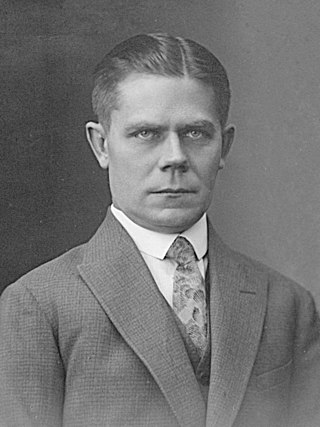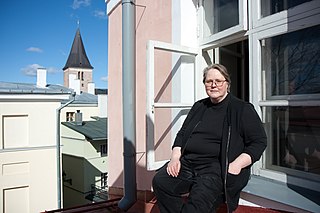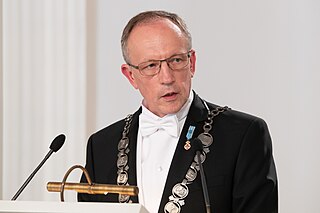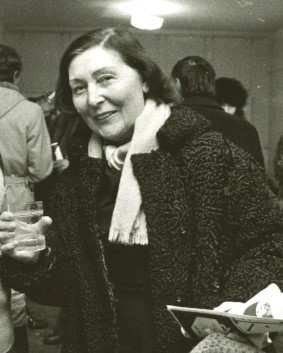Marten Seppel | |
|---|---|
 | |
| Born | January 6, 1979 |
| Nationality | Estonian |
| Occupation | Historian |
Marten Seppel (born January 6, 1979) [1] is an Estonian historian specializing in agrarian history. [2]
Marten Seppel | |
|---|---|
 | |
| Born | January 6, 1979 |
| Nationality | Estonian |
| Occupation | Historian |
Marten Seppel (born January 6, 1979) [1] is an Estonian historian specializing in agrarian history. [2]
Seppel graduated from the University of Tartu with a bachelor's degree in 2001. In 2003, he received a master's degree from the University of Cambridge. [3] On June 26, 2008, he defended his doctoral dissertation at the University of Tartu, titled Näljaabi Liivi- ja Eestimaal 17. sajandist 19. sajandi alguseni (Famine Relief in Livonia and Estonia from the Seventeenth Century to the Beginning of the Nineteenth Century). [4] His supervisors were Enn Tarvel and Tiit Rosenberg, and his reviewer was Aleksander Loit . His dissertation won one of the two main prizes in the national competition for student research papers. [5] In 2010, he was a postdoctoral fellow in the Department of Slavic and East European Studies at University College London, and from 2013 to 2014 at Uppsala University. [1]
From 2008 to 2016, Seppel worked at the University of Tartu as a lecturer in general history, and then as an associate professor of early modern history. [2] [3] In 2018, he was a visiting professor at the University of Greifswald. [1]
Seppel has been a member of the Learned Estonian Society since 2006 and has served as a member of its board. He is also a member of the Estonian Academic Historical Society (Estonian : Akadeemiline Ajalooselts), the Economic History Society, and The European Society for the History of Economic Thought. [1]

Tartu is the second largest city in Estonia after Tallinn. Tartu has a population of 97,435. It is 186 kilometres southeast of Tallinn and 245 kilometres northeast of Riga, Latvia. Tartu lies on the Emajõgi river, which connects the two largest lakes in Estonia, Lake Võrtsjärv and Lake Peipus. From the 13th century until the end of the 19th century, Tartu was known in most of the world by variants of its historical name Dorpat.

The University of Tartu is a public research university located in the city of Tartu, Estonia. It is the national university of Estonia. It is the largest and oldest university in the country. The university was founded under the name of Academia Gustaviana in 1632 by Baron Johan Skytte, the Governor-General of Swedish Livonia, Ingria, and Karelia, with the required ratification provided by King Gustavus Adolphus, shortly before the king's death on 6 November in the Battle of Lützen (1632).

Estonians or Estonian people are a Baltic Finnic ethnic group who speak the Estonian language. Their nation state is Estonia.

Konstantin Päts was an Estonian statesman and the country's president in 1938–1940. Päts was one of the most influential politicians of the independent democratic Republic of Estonia, and during the two decades prior to World War II he also served five times as the country's prime minister. After the 16–17 June 1940 Soviet invasion and occupation of Estonia, President Päts remained formally in office for over a month, until he was forced to resign, imprisoned by the new Stalinist regime, and deported to the USSR, where he died in 1956.

Jaan Tõnisson was an Estonian statesman, serving as the Prime Minister of Estonia twice during 1919 to 1920, as State Elder from 1927 to 1928 and in 1933, and as Foreign Minister of Estonia from 1931 to 1932.
Avo Sõmer is an American musicologist, music theorist, and composer, of Estonian birth.

Jüri Talvet is an Estonian poet and academic. He is the author of various literary works including poetry, criticism, and essays.

Vahur Afanasjev was an Estonian novelist, poet, musician and film director best known for his novel Serafima and Bogdan a story following the lives in a village of Russian Orthodox Old Believers on the shore of the lake Peipus from the end of the World War II to the nineties. The novel won the 2017 Estonian Writers' Union's Novel Competition.
Jaan Puhvel is an Estonian comparative linguist and comparative mythologist who specializes in Indo-European studies.

Leonhard Lapin, also known under the pseudonym Albert Trapeež, was an Estonian architect, artist, architecture historian, and poet.

Hans Johannes Kruus was an Estonian historian, academic and politician. As well as sitting in the Estonian parliament and the Supreme Soviet of the Estonian SSR, he was Deputy Prime Minister of Estonia in 1940 and Foreign Minister of the Estonian SSR between 1944 and 1950. He was also Rector of the University of Tartu in 1940–41 and in 1944.

Marju Lepajõe was an Estonian classical philologist, translator and religious historian.

Tiit-Rein Viitso was an Estonian linguist.

Toomas Asser is an Estonian medical scientist. He has been a member of the Estonian Academy of Sciences since 2011 and the Rector of the University of Tartu since 1 August 2018. His research focuses on clinical and molecular-biological aspects of brain tumors, pituitary surgery, surgical treatment of intracranial aneurysms, functional surgery and spinal cord injuries.

Helmi Üprus was an Estonian architectural and art historian. She trained in romance languages, studied English and ethnography, and earned a master's degree in art history from the University of Tartu in 1936. She worked her way up to head the cultural history department of the Estonian National Museum, where she researched folk art. In 1947, she began working at the Institute of History of the Academy of Sciences of the Estonian SSR. Persecuted by Stalinism she lost her job in 1950 and worked in a factory until Stalin's death. From 1953, she was the chief specialist in architecture and history for the government monument restoration service.

Enn Tarvel was an Estonian historian.
Priit Raudkivi is an Estonian historian.

Teet Veispak is an Estonian historian and cultural figure.

Tõnu-Andrus Tannberg is an Estonian historian and a professor of Estonian history at the University of Tartu. He has been a member of the Estonian Academy of Sciences since 2012.

The Estonian Science Communication Award is an Estonian award given to an individual or group for the popularization of science since 2006.